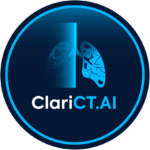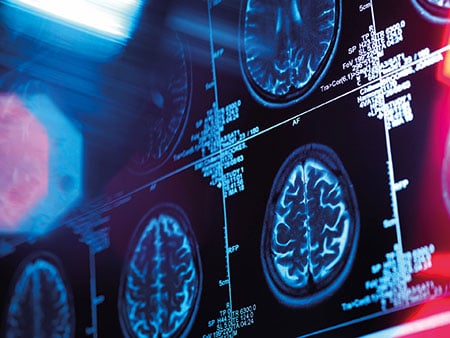Overview
Deep-learning AI technology, designed to increase CT image clarity, even with ultra-low-dose scans. It uses a deep convolutional neural network, trained to work in a vendor-agnostic way, to reduce noise and enhance image clarity for low-dose and ultra-low-dose DICOM CT images.
Trained with over one million patient images containing varying degrees of noise for different body parts. ClariCT.AI’s Clarity Engine separates image noise components while enhancing underlying structures; thus, providing clarity restored images.

Features
- Produces superior quality CT images, even when utilizing low-dose and ultra-low-dose.¹
- Option of fully automated or manual workflow.
- Fast processing speed, promoting efficient and streamlined workflow.
- DICOM compliant for seamless integration with existing CT equipment and PACS.
Benefits
- Noise-cleaned images aim to reduce time of CT image reading and diagnosis, and minimize second patient call back for a rescan.
- Minimizing harmful radiation exposure for operators and patients by lowering CT scan doses, particularly benefiting radiation-sensitive patients including oncology and pediatric patients, and those needing frequent scans, such as for low-dose lung cancer screening without sacrificing image quality2.
- Decreasing wear and tear on the X-ray tube, potentially extending its life by up to four times; thus, reducing costly tube replacements3.
- Works with any brand of CT scanner and PACS, old and new.
- Producing high-quality CT images, even with older or refurbished scanners.
- Using denoised images may assist other software in disease detection accuracy and improved workflow efficiency.
Image examples




To find out more about this solution or any of the other 140+ applications on the Blackford Platform, please book a discovery call with our team.

Book a meeting
We’d welcome the opportunity to learn more about your AI needs and to explain how partnering with Blackford can drive efficiency and provide ongoing value.
Book a Meeting¹Nam JG, Ahn C, Choi H, Hong W, Park J, Kim JH, et al. Image quality of ultralow-dose chest CT using deep learning techniques: potential superiority of vendor-agnostic post-processing over vendor-specific techniques. European Radiology. 2021 Jan 7;31(7):5139–47.
2Park S, Yoon JH, Joo I, Yu MH, Kim JH, Park J, et al. Image quality in liver CT: low-dose deep learning vs standard-dose model-based iterative reconstructions. European Radiology. 2021 Nov 25;32(5):2865–74.
3Marcovitch A. The Effect of CT Scanning With Reduced Dose on the X-ray Tube Lifetime [Internet]. 2010 [cited 2023 Sep 4].










.jpg)




